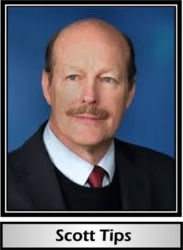One hundred years ago to the day, on July 1, 1916, the British and French Armies went on the attack against the German Army on the Somme with high expectations. This was the Allied offensive that was to crack the German lines in Northern France and hopefully end the Great War. Within hours, minutes really, though, the offensive got bogged down. Some 20,000 British soldiers died on the first day alone, not to mention the tens of thousands of French and German soldiers who died as well. By the time the Battle of the Somme had ground to a halt 141 days later, more than a million men were battlefield casualties. It was a tragic and senseless loss of life. And for nothing really — trench lines moved seven miles at most. Unbelievably, there are still some people today who think this was a fair exchange.
Much more tranquilly, a century later, the Codex Alimentarius Commission met in its 39th session from June 27 through July 1, 2016, in Rome, Italy to discuss various food standards and guidelines affecting the health of the world’s population. This is the new battlefield involving millions of lives. Standards and guidelines for food and drink are debated, sometimes seriously and sometimes casually; but whether the Codex delegates realize it or not, millions of lives are at stake. Inadequate nutrition coupled with an overabundance of toxins and contaminants can and do lead to the deaths or early deaths of millions, or at the very least lives full of pain and disease. And for no good reason really — more money pocketed by the toxin manufacturers coupled with the cover story and illusion that the world’s hungry are being fed. Unbelievably, there are people today who think this is a fair exchange.
The National Health Federation (NHF) is unique among health-freedom groups in having an opportunity to positively and directly affect the health and lives of some seven billion individuals worldwide. We take our work at Codex very seriously and did so again at this largest Codex meeting of the year. It is not about money for us, it is about improving the quality of life for everyone, even those who act against us at the meetings and do not realize that their own lives are being deeply affected. This year, I attended the meeting along with NHF Board member David Noakes, and together we pushed the NHF position of better nutrition and fewer contaminants. The important highlights of the meeting are covered in this report.
An NRV for Vitamin EOn Monday, June 27th, the opening day of the Codex meeting commenced with the usual welcoming speeches and housekeeping details. But then in quick succession Chairwoman Awilo Pernet steered the many hundreds of delegates through discussions on several different topics. One of the more important agenda items, one that NHF has been focusing on for many years now, dealt with the proposed Nutrient Reference Value (NRV) for Vitamin E. Codex’s managers have had a plan to advance it up the 8-step ladder to final adoption at a measly 9 mg (13.5 IUs) per day! Even the U.S. government’s pro-drug National Institutes of Health recommends 15 mg (22.4 IUs) per day, so why — once again — the rush to the nutritional bottom with Vitamin E? Well, keep in mind that Vitamin E was first known as the “fertility vitamin,” so that might provide a clue as to certain parties’ intentions. It is also an important anti-aging vitamin and is really, as NHF and Malaysia argued at this meeting, a complex of eight different compounds, four tocopherols and four tocotrienols.
At Codex, NHF has consistently spoken out for better, optimal health and not simply for accepting the suboptimal health that many Codex delegations think is sufficient. In speaking out, NHF often has to argue strenuously on issues; but NHF did not anticipate on this very first day that it would have to fight with Codex simply to be recognized to speak out in defense of higher levels of Vitamin E as well as recognition of the fact that Vitamin E is a complex and not simply alpha tocopherol.
When I tried to be recognized by the Chairwoman so that NHF could support the Malaysian delegation's position that the NRV for Vitamin E should be higher than a measly 9 mg (13.5 IUs) per day, the Chairwoman ignored NHF's request to speak. But I persisted. Finally, a microphone was begrudgingly granted to NHF. I lambasted the process that kept NHF and others, such as the Council for Responsible Nutrition (CRN), from being able to express their views. The Chairwoman retorted that we needed to present our request to speak in a more timely manner, but in fact NHF had begun presenting its request to speak three hours before and continued up until the last moment.
After correcting the record on this procedural slip-up on the Chairwoman's part, I then explained that 9 mg per day level for Vitamin E was less than most countries designate for children and that it was time for Codex to step into the 21st Century and recognize Vitamin E as a complex of isomers and not simply a single vitamin, and that we should all be striving to optimize health. CRN then made several telling points about the need for a higher NRV for Vitamin E. The final result is that — thanks to Malaysia, Indonesia, CRN, and NHF — this agenda item was not advanced to a near-final step but instead will be brought up again for debate at the Codex Nutrition Committee meeting this late Fall in Germany.
Maximum Level for Inorganic Arsenic in Husked RiceThe next day, the Codex Commission considered the proposed Maximum Level (ML) of 0.35 mg/kg (or 350 parts per billion) for inorganic arsenic in husked rice. This Codex issue might seem trivial to many, but when you consider that half of the World’s seven billion people eat rice, the impact upon health of even low levels of arsenic in rice becomes obvious. And inorganic arsenic is more toxic than organic arsenic. So, this agenda item was quite controversial among the delegates with the European delegates along with Consumers International (CI) and NHF, wanting lower arsenic levels and most other countries willing to accept higher levels.
This great divide had erupted at the Codex Contaminants Committee meeting just held in Rotterdam last April. There, the NHF had opposed this higher 0.35 mg/kg level, but the Committee chose to override us, CI, the Philippines, Sri Lanka, Egypt, Norway and the European Union (EU) and advance this for final adoption by the parent body, the Commission, at this Summer meeting. NHF still argued for an ML of 0.25 mg/kg, which we saw as the best we could get at Codex even though we believe that a 0.15 mg/kg ML would be far healthier and still practical. Unfortunately, at the Committee meeting, only NHF and CI supported the 0.15 ML, so there was no hope of seeing the healthiest level prevail at the Commission meeting.
Remember, arsenic is often present in ground water, which is used to flood rice paddies. These populations are also ingesting the same higher levels from their drinking water, compounding a problem Codex is addressing as only a “single source” hazard. Strange as it might seem, it only takes small incremental adjustments in inorganic-arsenic MLs for the health of vast populations to be affected. Still, despite the strong arguments in support of a lower ML for arsenic in rice, the Commission adopted the higher level of 0.35 mg/kg, with the understanding that it would be reviewed again in three years.
The Hormone rBGH is Tabled Also, on Tuesday, June 28th, the Commission briefly reconsidered the issue of recombinant Bovine Growth Hormone (rBGH). As you will remember, last year, NHF very strongly argued against establishing a Codex standard for rBGH because we knew that the United States, Australia, and other countries would use that standard as a wedge to flood the world with unhealthy rBGH-doped milk and dairy products. We won that battle in 2015.
At this year’s meeting, NHF again anticipated a big fight over rBGH. Since the rBGH standard is hovering at the final Step 8 of the Codex adoption process, it would not take much to push it into adopted status. However, those Codex member States on opposing sides were not looking forward to another long and bruising fight at this year’s meeting. The Chairwoman, who was facing a major time crunch at the meeting, adroitly managed to craft a cease-fire of sorts between the two sides, so that when the rBGH agenda topic arose, she suggested to the Commission that it be placed on the back burner and addressed instead at next year’s meeting. Everyone — including NHF — stayed silent, holding their collective breaths, and hoping that no one would make an issue out of the Chairwoman’s suggestion.
Everyone except Ecuador. Having evidently missed the memo, Ecuador just had to speak up and announce that it wanted to see the rBGH standard adopted. The Chairwoman wisely waited a few heartbeats, saw that no one else was ill-informed enough to take the floor, and then promptly moved on to the next agenda topic. The rBGH issue was dead for now. Every year’s delay works in favor of the anti-rBGH camp, which includes Russia, the EU, Norway, Switzerland, India, Kenya, Malaysia, CI, and the NHF. So, that was a quick and painless victory.Standards and guidelines for food and drink are debated, sometimes seriously and sometimes casually; but whether the Codex delegates realize it or not, millions of lives are at stake.
The Antimicrobial Resistance Task ForceWith antibiotic resistance on the rise worldwide, Codex has proposed to set up a Task Force on Antimicrobial Resistance (TFAMR), which would focus on possible revisions to the “Code of Practice to Minimize and Contain Antimicrobial Resistance (CAC/RCP 61-2005)“ and in developing "Guidance on Integrated Surveillance of Antimicrobial Resistance." This Task Force would seek to address critical issues: (1) Minimizing the use of antimicrobials in all types of agriculture (including aquaculture and crop production); and (2) developing guidelines for tracking antimicrobial usage and resistance. The United States and Brazil (both heavy users of antibiotics in animals) naturally oppose the TFAMR since they see it as an impediment to their continuing their practices of reckless antibiotic usage. In fact, the U.S. has already said that it would work to delay the creation of the Task Force. The United States’ clever “solution” (supported by Brazil) was to buy time by creating an electronic Working Group (eWG) to “study” the issue for at least one year before deciding if a task force is really necessary.
At the meeting, the U.S. and its minions (Brazil, Paraguay, Ecuador, Argentina, El Salvador, Chile, Peru, Mexico, Guinea and of course, our old favorite Australia) pretended that the issue must be seriously studied first by an eWG “to get it right.” Stalling for time, they were outmaneuvered though by the Chairwoman who had crafted and later proposed a smart plan to avoid any delay.
Before that plan was hatched, however, the World Health Organization (WHO) representative weighed in quite strongly against any delay. “The time for acting is now,” she reminded the delegates. “This is a very, very alarming situation.” Many others agreed. South Korea offered to host the Task Force. The EU offered to co-host it; and then Colombia, Malaysia, Kenya, South Africa, China, India, Turkey, Mali, Nigeria, Somalia, Switzerland, Norway, Thailand, Honduras, and of course CI and NHF all called for the Task Force to be established at once.
Given the weight of consensus behind creating the Task Force, little doubt remained that the Chairwoman would create it. The issue was simply whether the eWG would come first, thereby delaying the work of the Task Force. In the end, the Chairwoman put her plan into play where both a Task Force and a working group (in this case a physical WG that would meet in person) would be established working concurrently so that there would be no delays. Delegates were told that it would take about three, maybe four sessions of the Commission for the two groups to finish their work.
The ReportThe last day of each Codex meeting is the “reading-of-the-Report” day. This is a chance for the Codex staff and delegates to comb through the written Report and make corrections. Friday, July 1st, was that day. As the Chairwoman took us line-by-line through the draft Report, both NHF and the International Food Policy Research Group (IFPRI, the Biofortification INGO) had the most difficult time being recognized by the Chairwoman so that we could speak. Once again, message after message was sent up to her and the Codex Secretariat to be recognized but were ignored as if we did not exist. Time literally dragged on. Whether she actually got our messages or not is unknown but we do know that they had at least reached the Codex Secretariat. So, something strange was going on there. But we persisted, as we always do, talked with the Chairwoman and the Secretariat during a break, and then finally got the chance to speak and have our corrections made to the Report. NHF later filed a formal written complaint with the Codex office in Rome, which was quickly answered in a conciliatory and satisfactory way.
The lack of attention given to managing the floor properly was both astonishing and disappointing, not to mention disrespectful. It also highlights yet another reason that Codex’s work mirrors the hundred-year-old Battle of the Somme. Codex, too, is also often a slog through the mud towards its objective, held back by an unblinking obstinacy as well as determined opposition. Just as with the Somme, there are millions, even billions, of lives at stake. These lives can either be treated with the same casual disregard as they were at the Somme or they can be treated with the respect and value that they deserve. For all humans deserve the best, the chance to live life to its fullest potential in optimal health, not simply to be led forward like sheep to the slaughter, by the latest engines of war against humanity: poor nutrition and toxin overloads.WF

A graduate of the University of California at Berkeley Law School, Scott C. Tips currently practices internationally, emphasizing Food-and-Drug law, business law and business litigation, trade practice, and international corporate formation and management. He has been involved in the nutrition field for more than three decades and may be reached at (415) 244-1813 or by e-mail at scott@rivieramail.com.
Published in WholeFoods Magazine December 2016










